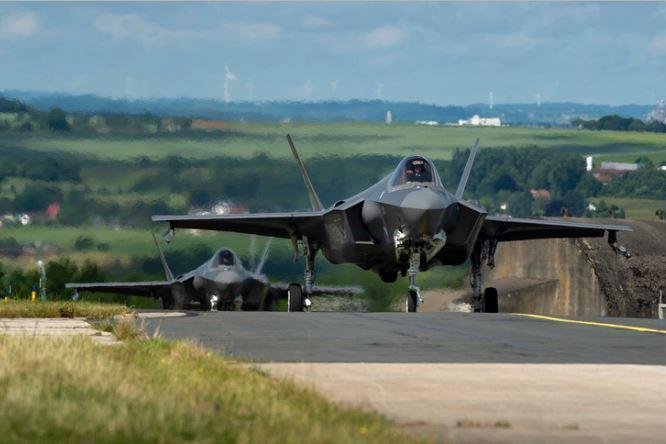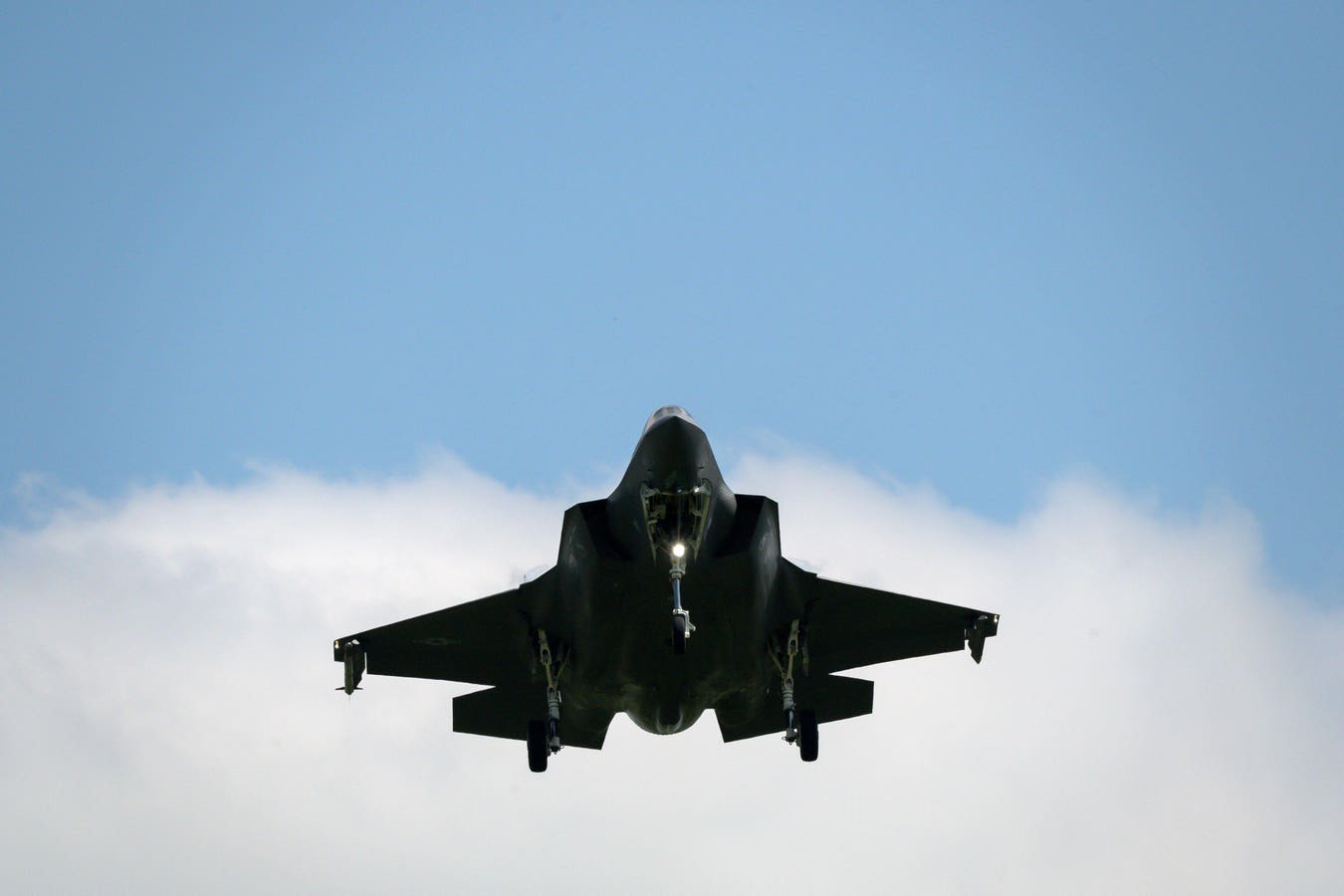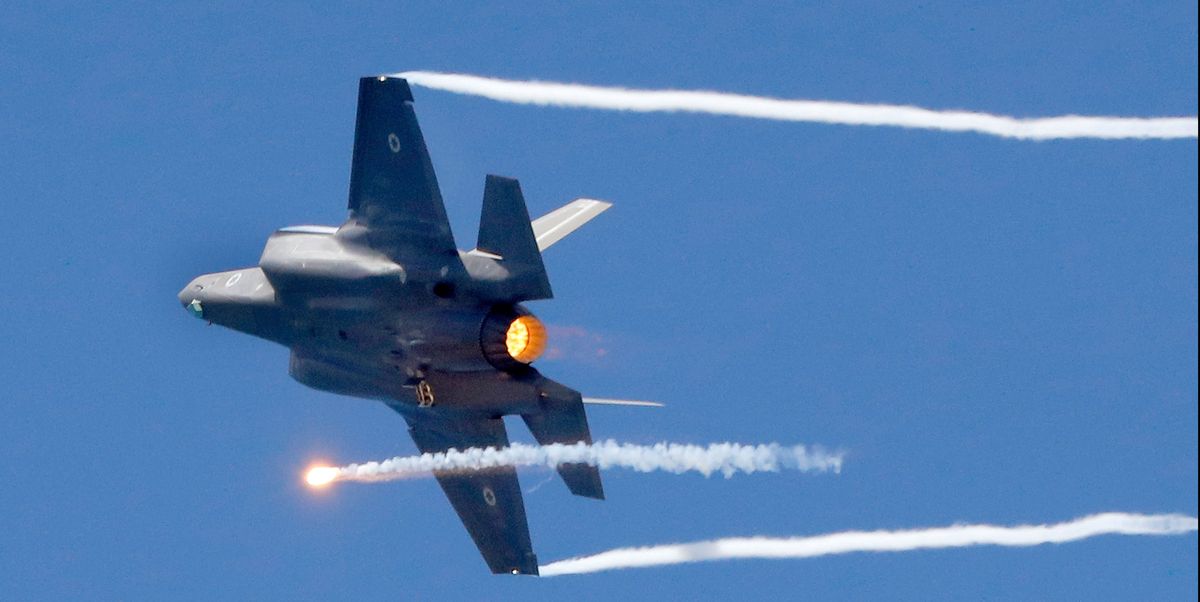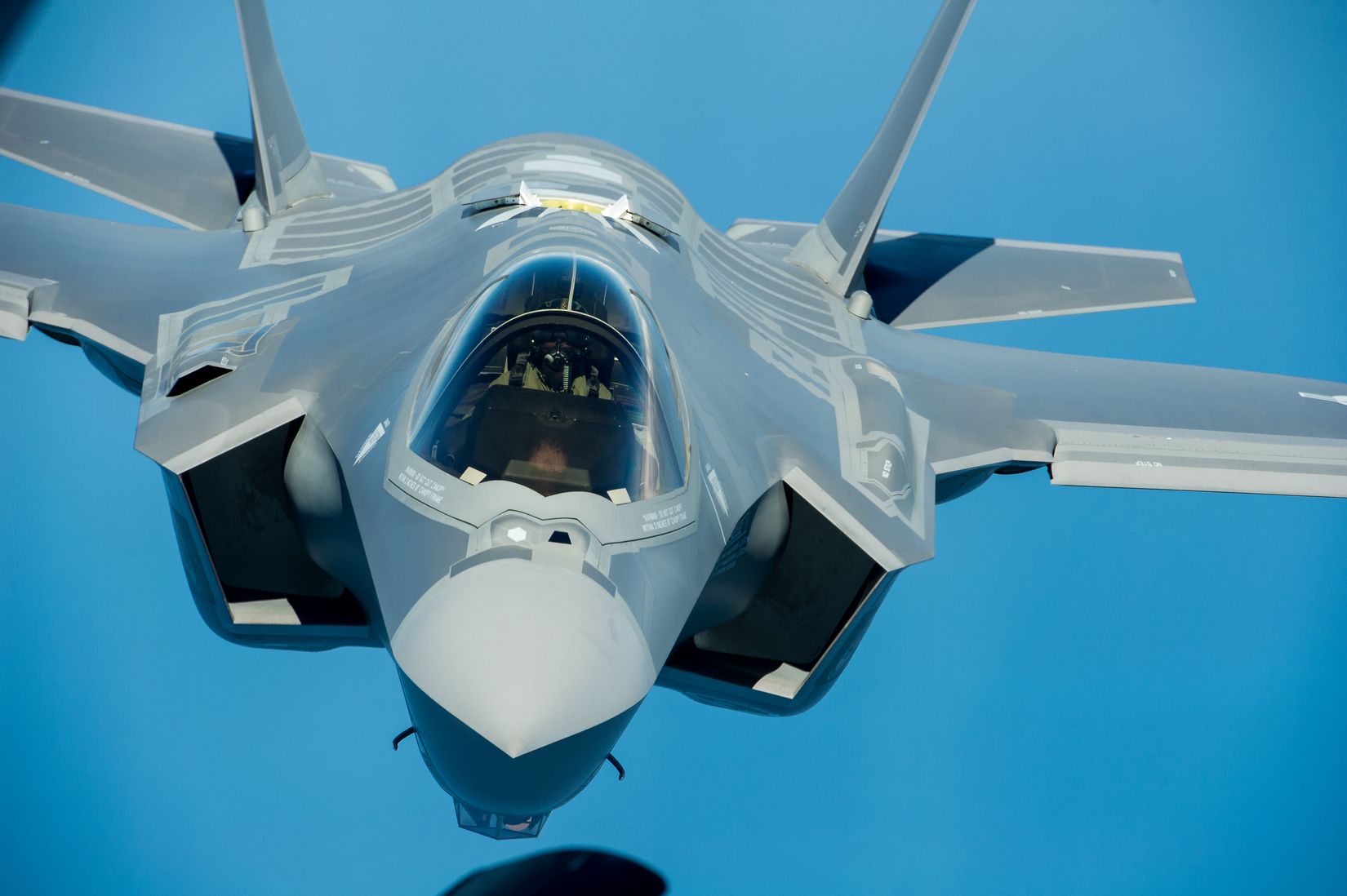Amid ‘green glow’ concerns, another issue has emerged for pilots flying the F-35 at night
By: David B. Larter
12 June 2019
View attachment 8003
F-35 fighter jets conduct their first night flying trials off the United Kingdom’s warship HMS Queen Elizabeth. (Dane Wiedmann/F-35 Lightning II Pax River ITF)
WASHINGTON — Engineers and pilots continue to struggle with operating the F-35 jet in low-light conditions, with a new issue emerging that obstructs the horizon line for pilots when flying at night with below-average levels of starlight, according to documents exclusively obtained by Defense News.
The issue, which affects the feed from the night vision camera, appears to the pilot as wonky horizontal lines, or striations, in the night vision display, obscuring the horizon.
“During shore-based testing in overcast starlight conditions, [helmet-mounted display] symbology brightness and video contrast at the max settings and while adjusting video brightness, the pilots were unable to generate a reliable image of the horizon at any time, or to display a scene with texturing critical for peripheral motion cues,” the government document reads.
Fixing the glitch, which was first reported in November 2017, is a top priority for the U.S. Marine Corps, according to the documents. The issue is listed as a category 1 deficiency in the documents and is defined as something that “critically restricts the combat readiness capabilities of the using organization.” In this scale, category 1 represents the most serious type of deficiency.
The issue affects all versions of the F-35, the documents point out.
The problem is separate from ongoing concerns about “green glow” emitted by the helmet-mounted display’s LED lights, which can obstruct a pilot’s view of an aircraft carrier’s deck lights during night landing operations at sea in very low light.
The glow issue is also listed as a category 1 deficiency, according to the documents. But while it is a separate issue, a Lockheed Martin executive in a statement pointed to a common solution for both low-light issues: the improved Generation III F-35 helmet currently being fielded.
“The improved Gen III helmet has already been designed, tested and is now being qualified for use,” said Greg Ulmer, Lockheed Martin’s general manager of the F-35 program. “The first few of these new helmets have been delivered and we anticipate the upgraded helmets will resolve both the green glow and night vision conditions identified.”
Furthermore, the Navy is looking to “organic light-emitting diode” technology in its displays to permanently solve its “green glow” issue. That potential solution is expected to be deployed this year. In short, rapidly advancing technology should solve both the issue with the night vision camera as well as the the sticky “green glow” problem.
View attachment 8002
U.S. Air Force Staff Sgt. Edwin Portan inspects the coaxial cable on a helmet-mounted display at Eglin Air Force Base, Fla., on Feb. 29, 2016. These cables plug into the F-35A Lightning II. (Senior Airman Andrea Posey/U.S. Air Force)
“As camera and OLED technology advances rapidly, we expect the F-35 helmet to continue to deliver unprecedented levels of situational awareness for pilots and only improve further over time,” Ulmer said.
Defense News submitted written questions to the Defense Department’s F-35 program office concerning these and other deficiencies, but it did not respond by press time, despite multiple follow-ups over a period of months.
Workarounds and solutions
A source familiar with the program and the efforts to fix its deficiencies said that solving the green glow issue may, in fact, improve the night vision issue because the display settings will be better optimized for the night vision camera feed.
“If you imagine you have a camera that doesn’t have the contrast that you would really love to have and you have the green glow, the two together don’t make you happy," the source said. "If you take the green glow away and you change the contrast on the camera, the two of them together start looking a lot better.
“We’ll need to wait and see because the green glow was a big driver in making that [night vision camera] objectionable. So I’m not trying to exonerate the camera. What I’m saying is I don’t think we had the system to be able to differentiate: Is it the camera or the green glow that was causing the problem?"
Issues with low-light operations have pushed the Navy to only allow experienced pilots to fly the F-35 in conditions that elicit the green glow issue. For now, if the conditions for green glow obstruction are in play, only pilots with 50 or more night carrier landings can fly the plane.
Last year, the commander of the Navy’s strike fighter squadron told reporters that the green glow issue forced a number of actions from the pilots in order to make sure they could land safely, and for the time being that was best left to more experienced fliers.
"There are some complexities with the green glow that we deal with right now, but we only do it with experienced pilots,” said Cmdr. Tommy Locke, according to Military.com. “In that really dark environment, you can’t get the display down low enough where you can still process the image on the display, and once you bring the display up high enough where you can, that information — it conflicts with the outside world.”
Locke also said OLED technology was going to make a big difference.
“It reduces the green glow; there’s a much crisper picture that will allow us to avoid the disorientation with the green glow,” he said.
Valerie Insinna in Washington contributed to this report.

 www.defensenews.com
www.defensenews.com
By: David B. Larter
12 June 2019
View attachment 8003
F-35 fighter jets conduct their first night flying trials off the United Kingdom’s warship HMS Queen Elizabeth. (Dane Wiedmann/F-35 Lightning II Pax River ITF)
WASHINGTON — Engineers and pilots continue to struggle with operating the F-35 jet in low-light conditions, with a new issue emerging that obstructs the horizon line for pilots when flying at night with below-average levels of starlight, according to documents exclusively obtained by Defense News.
The issue, which affects the feed from the night vision camera, appears to the pilot as wonky horizontal lines, or striations, in the night vision display, obscuring the horizon.
“During shore-based testing in overcast starlight conditions, [helmet-mounted display] symbology brightness and video contrast at the max settings and while adjusting video brightness, the pilots were unable to generate a reliable image of the horizon at any time, or to display a scene with texturing critical for peripheral motion cues,” the government document reads.
Fixing the glitch, which was first reported in November 2017, is a top priority for the U.S. Marine Corps, according to the documents. The issue is listed as a category 1 deficiency in the documents and is defined as something that “critically restricts the combat readiness capabilities of the using organization.” In this scale, category 1 represents the most serious type of deficiency.
The issue affects all versions of the F-35, the documents point out.
The problem is separate from ongoing concerns about “green glow” emitted by the helmet-mounted display’s LED lights, which can obstruct a pilot’s view of an aircraft carrier’s deck lights during night landing operations at sea in very low light.
The glow issue is also listed as a category 1 deficiency, according to the documents. But while it is a separate issue, a Lockheed Martin executive in a statement pointed to a common solution for both low-light issues: the improved Generation III F-35 helmet currently being fielded.
“The improved Gen III helmet has already been designed, tested and is now being qualified for use,” said Greg Ulmer, Lockheed Martin’s general manager of the F-35 program. “The first few of these new helmets have been delivered and we anticipate the upgraded helmets will resolve both the green glow and night vision conditions identified.”
Furthermore, the Navy is looking to “organic light-emitting diode” technology in its displays to permanently solve its “green glow” issue. That potential solution is expected to be deployed this year. In short, rapidly advancing technology should solve both the issue with the night vision camera as well as the the sticky “green glow” problem.
View attachment 8002
U.S. Air Force Staff Sgt. Edwin Portan inspects the coaxial cable on a helmet-mounted display at Eglin Air Force Base, Fla., on Feb. 29, 2016. These cables plug into the F-35A Lightning II. (Senior Airman Andrea Posey/U.S. Air Force)
“As camera and OLED technology advances rapidly, we expect the F-35 helmet to continue to deliver unprecedented levels of situational awareness for pilots and only improve further over time,” Ulmer said.
Defense News submitted written questions to the Defense Department’s F-35 program office concerning these and other deficiencies, but it did not respond by press time, despite multiple follow-ups over a period of months.
Workarounds and solutions
A source familiar with the program and the efforts to fix its deficiencies said that solving the green glow issue may, in fact, improve the night vision issue because the display settings will be better optimized for the night vision camera feed.
“If you imagine you have a camera that doesn’t have the contrast that you would really love to have and you have the green glow, the two together don’t make you happy," the source said. "If you take the green glow away and you change the contrast on the camera, the two of them together start looking a lot better.
“We’ll need to wait and see because the green glow was a big driver in making that [night vision camera] objectionable. So I’m not trying to exonerate the camera. What I’m saying is I don’t think we had the system to be able to differentiate: Is it the camera or the green glow that was causing the problem?"
Issues with low-light operations have pushed the Navy to only allow experienced pilots to fly the F-35 in conditions that elicit the green glow issue. For now, if the conditions for green glow obstruction are in play, only pilots with 50 or more night carrier landings can fly the plane.
Last year, the commander of the Navy’s strike fighter squadron told reporters that the green glow issue forced a number of actions from the pilots in order to make sure they could land safely, and for the time being that was best left to more experienced fliers.
"There are some complexities with the green glow that we deal with right now, but we only do it with experienced pilots,” said Cmdr. Tommy Locke, according to Military.com. “In that really dark environment, you can’t get the display down low enough where you can still process the image on the display, and once you bring the display up high enough where you can, that information — it conflicts with the outside world.”
Locke also said OLED technology was going to make a big difference.
“It reduces the green glow; there’s a much crisper picture that will allow us to avoid the disorientation with the green glow,” he said.
Valerie Insinna in Washington contributed to this report.

Amid ‘green glow’ concerns, another issue has emerged for pilots flying the F-35 at night
During low-light conditions, the F-35's night vision camera display starts showing wonky horizontal lines across the screen that obstruct the pilot's view of the horizon.













